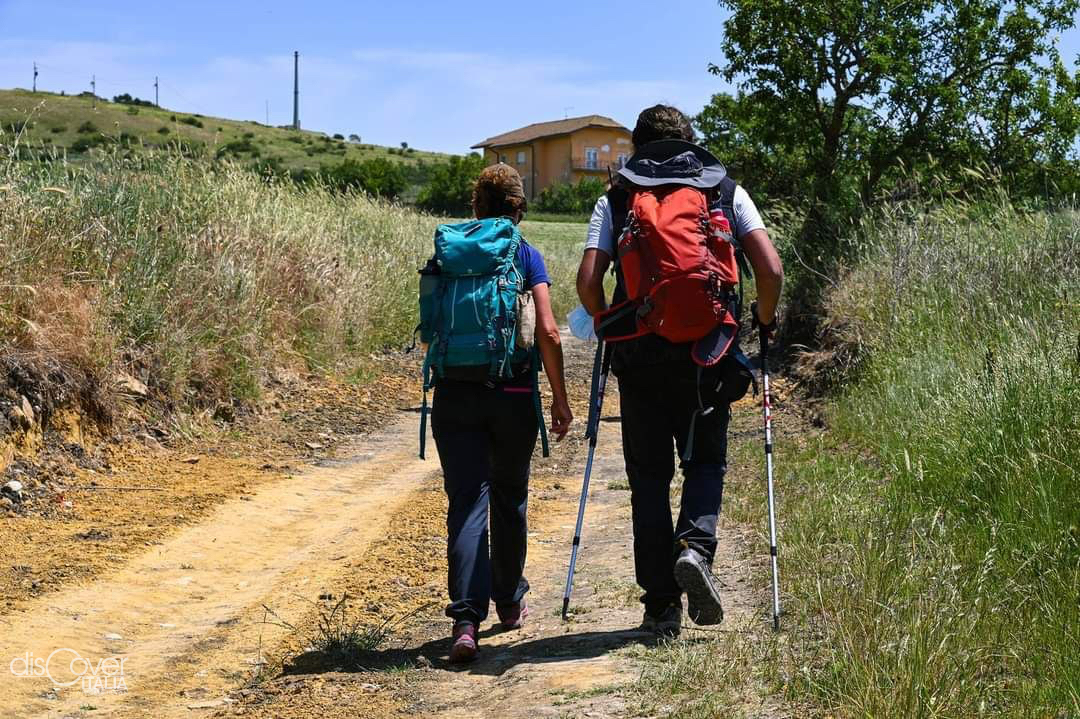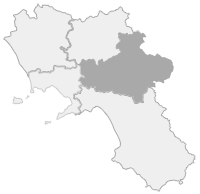The Campania Region has evolved unexpectedly before my eyes, it maybe the period we are experiencing, it maybe the assignment of the role as regional coordinator for the Environmental Hiking Guides, I don't know, but of one thing I'm sure, there are so many things to discover that I will miss my travels abroad less than I could have imagined.

My journey in the ancient lands of the Samnites and Irpinia begins with a word: "Ultreya!", The medieval greeting that was exchanged along the southern Via Francigena that for me will start from Casalbore, in Irpinia, ending with an exciting encroachment in Puglia, for a total of 30 km divided into two stages. Border places have always fascinated me and here there are so many roads crossing: Via Micaelica, Regio Tratturo, Pescasseroli - Candela, Via Traiana; lives of pilgrims following one another along infinite and almost unknown paths, with only few reference points on the path like a pile of stones placed one on top of the other to mark the right direction. Not only travelers and pilgrims, but above all shepherds, these were also the ways of transhumance and the testimonies of the past are still alive in the culinary tradition of this territory, such as pecorino, caciocavallo and ancient grains, such as the high sounding " Senator Cappelli “.
During the very first day of walking, I’m immediately surprised by the infinite vastness of the landscape, a succession of soft golden hills dotted with small villages scattered here and there in strategic positions, in fact, the Tower of Casalbore never abandons us, almost like watching over our steps. The heat is felt, but the spirit is held high by the talented guides I have decided to follow, Gerardo and Andrea from "Terre di Mezzo". It was during the second day that I had the feeling of being in a middle ground, with the thought that constantly runs to the people who before me have made the same path hundreds of years before. Hospitality was the lifeblood of these pilgrimages and, like them in those days, I lived the same experience thanks to the Guides organizing several convivial moments to give us the opportunity not only to taste typical products, but also to interact with the locals in this splendid setting of ancient rural houses still keeping intact their authenticity.

The icy water of cool underground springs flowing from stone fountains refreshes our feet, thanking before returning to feel the earth beneath them, that same land that has united peoples, languages and tales of myths and legends. To tell you one of them, I will take you to a particular stage of this journey: Bolle della Malvizza, a surreal place where the cultivated fields suddenly give way to an unexpected volcanic manifestation that Andrea, our rural guide, describes as follows: "In the Miscano valley, the presence of methane in the subsoil, other flammable gases and gaseous hydrocarbons would also be testified by a serious accident that occurred, in 1867, to a team of workers intent on building the "Cristina" railway (at the Castelfranco in Miscano station) along the Naples-Foggia line. The sudden release of grisù and its subsequent explosion (triggered by the torches used for lighting) caused the death of an entire team.
Bolle della Malvizza (Bubbles of Malvizza) are an interesting ecological niche allowing the presence and life of a very particular microflora and microfauna. In 2005, a new species of gram-positive bacterium (Bacillus saliphilus) was discovered, isolated in the algae of the Bolle della Malvizza. This new species showed an affinity of 99.9% with one strain of bacteria isolated in a soda lake in China and over 97% with two other strains isolated in a lake in Kenya. (respectively 98.3 and 97.8% identity) ".
I leave these places with the desire to walk other path at a slow and conscious pace, like a true pilgrim.
Copyright video, foto e testi © 2020





Comments powered by CComment